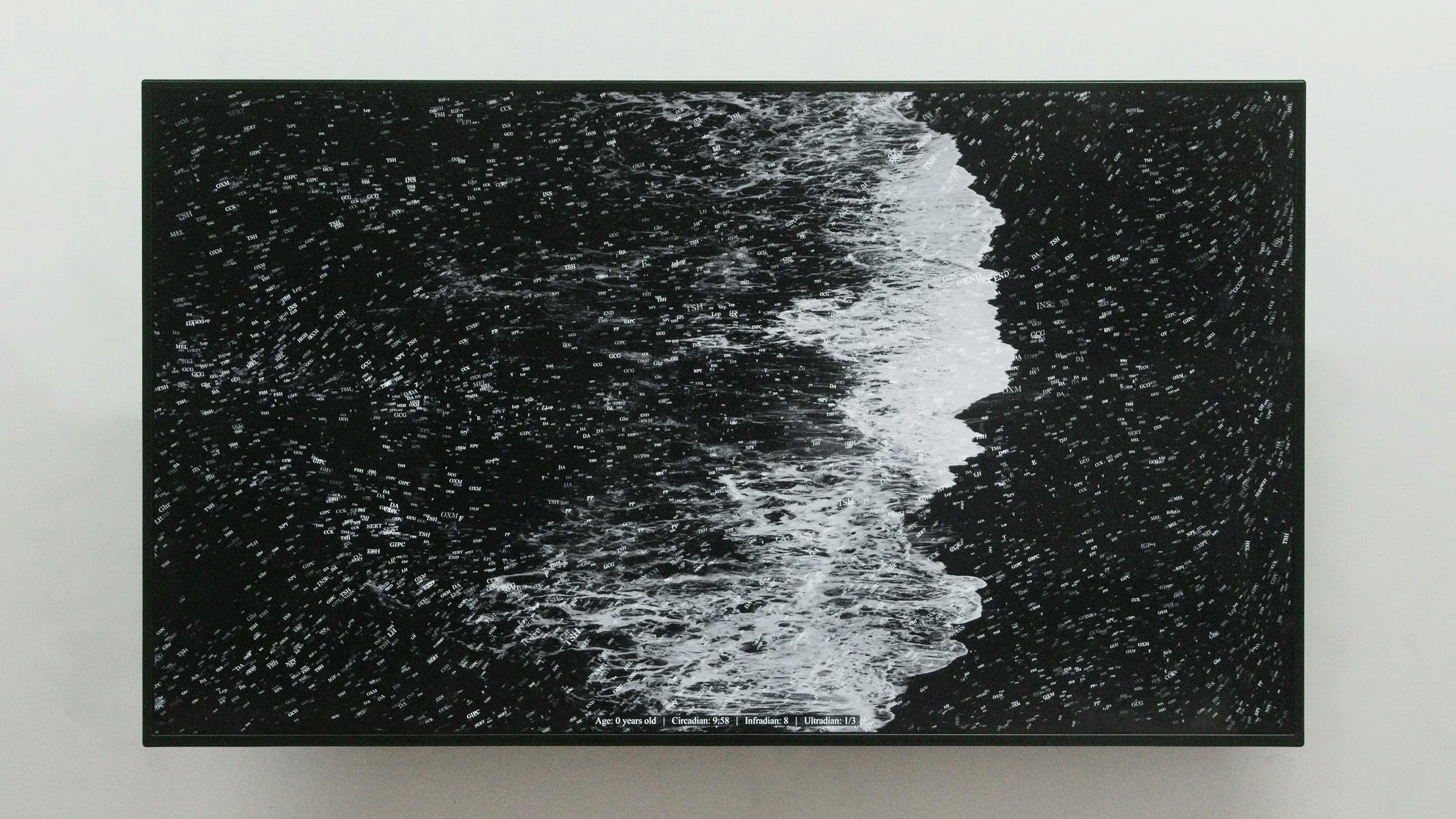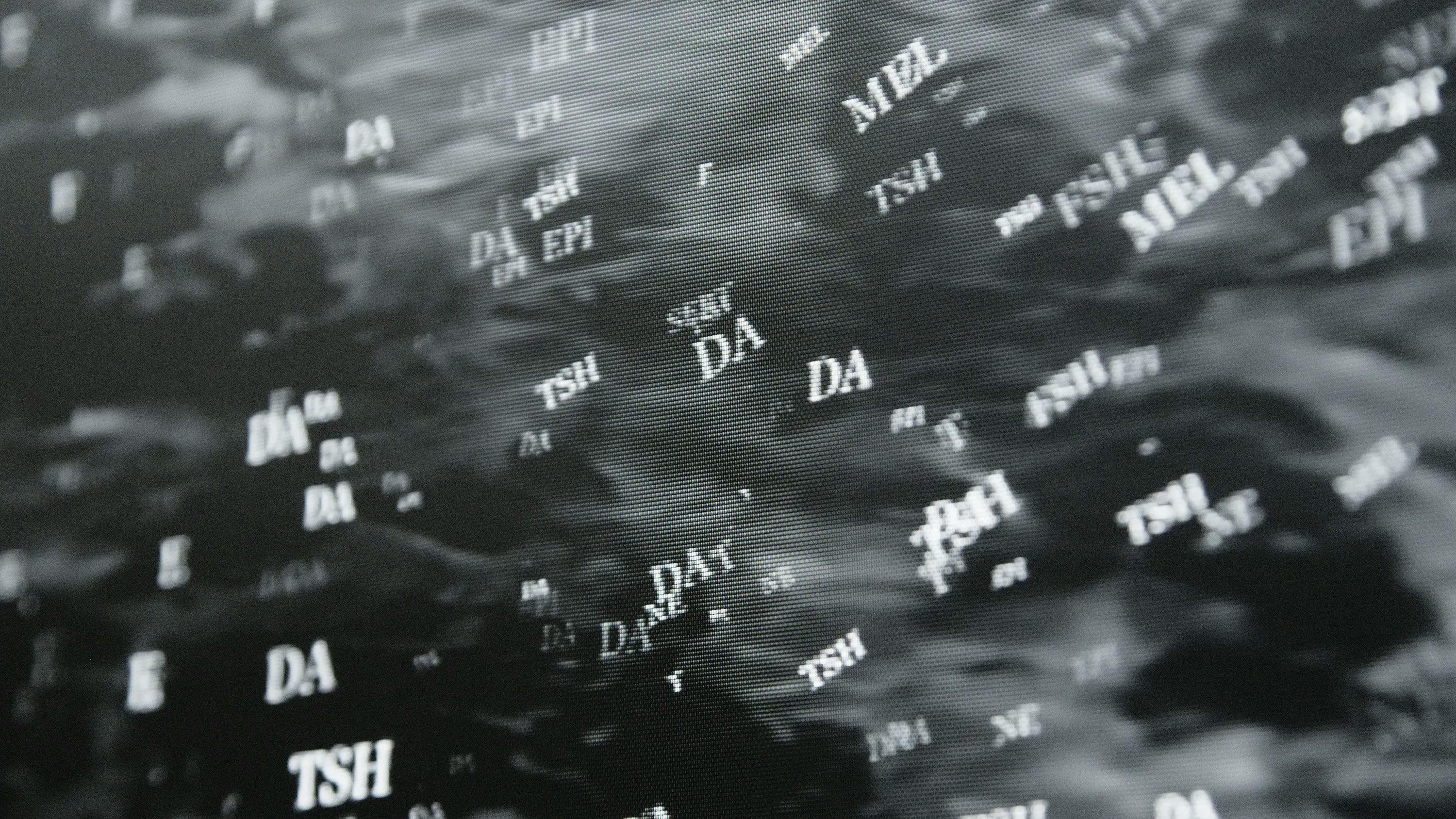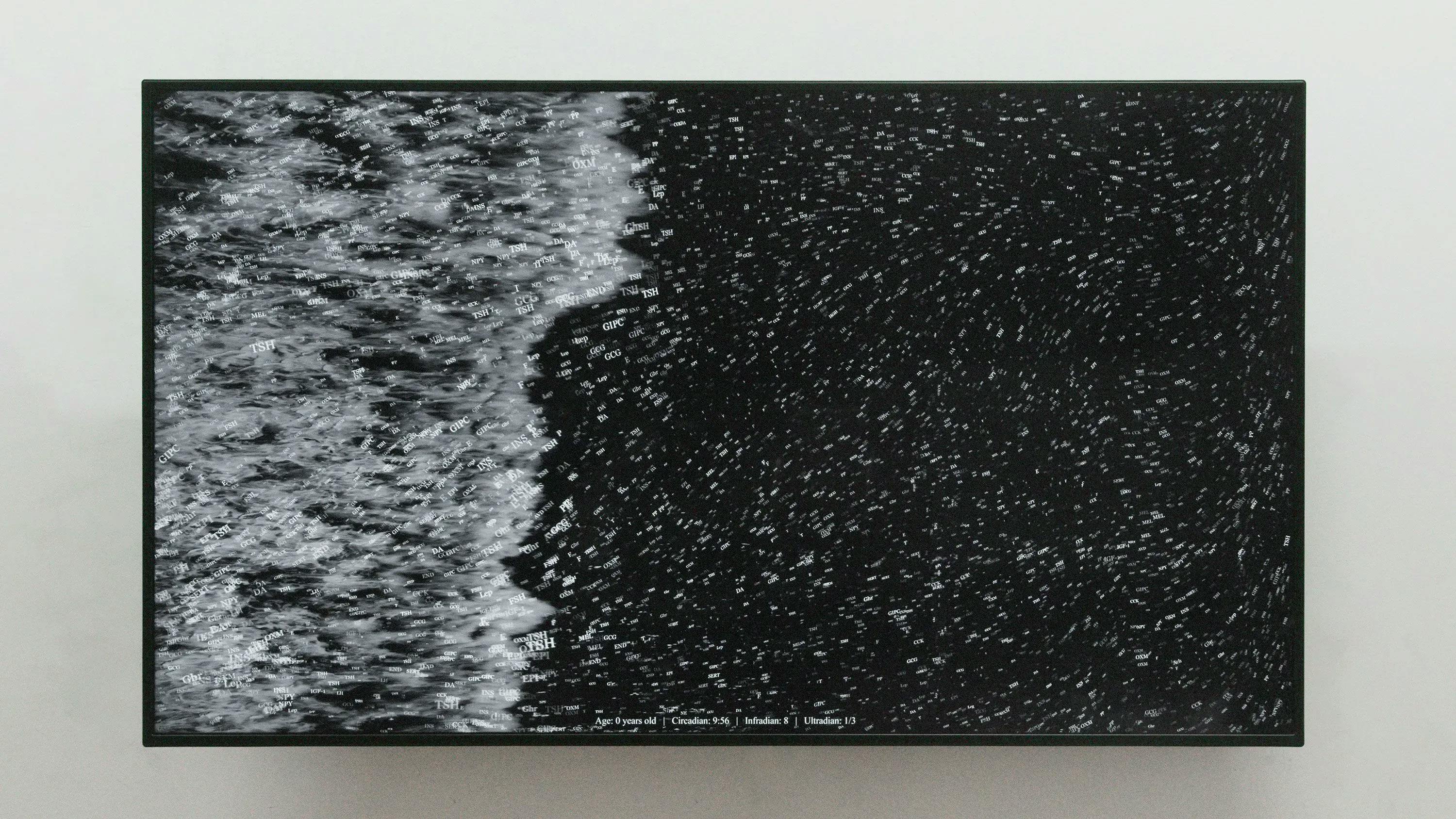AQ.0006
Rafael Lozano-Hemmer:
Hormonium (2022)
Custom-generative code
•
Acquired Sep 2022
Mood Swing
A trenchant play on the inborn chemical programming of our bodies alongside the literal programming of a computer, the idea for the generative artwork Hormonium was inspired by the artist’s rapidly-evolving teenaged children. On a screen, sequences of crashing ocean waves are interspersed with acronyms such as GH (growth hormone) and TSH (thyroid stimulating hormone), as well as many other chemicals that our bodies release in accordance with our chronobiology—in other words, the timed physiological processes of a lifespan. Within our bodies, many different time cycles are occurring at once, from the circadian rhythms of waking and sleep (which, in Hormonium, appear as cortisol, progesterone, and testosterone in the morning, FSH and LH in the afternoon, and estradiol and prolactin at night) to the extended patterns of growth, reproduction, and aging.
Currently, the hormonal age of the installation is 0 years, but Lozano-Hemmer has designed it to live for 90 years. The complex chemistry that informs the visual display was created with the help of an endocrinologist, who assisted the artist in finding ways to use computer programming to elucidate and express the connection between the individual physical vessel and the intrinsic chronology of all life systems, even the tide.
Overview
Meet Rafael Lozano-Hemmer

Mexico City-born artist Rafael Lozano-Hemmer works at the intersection of architecture and performance art, creating platforms for public participation using technologies such as robotic lights, digital fountains, computerized surveillance, media walls, and telematic networks. Inspired by phantasmagoria, carnival, and animatronics, his light and shadow works are, in his words, "anti-monuments for alien agency."
Lozano-Hemmer was the first artist to represent Mexico at the Venice Biennale with an exhibition at Palazzo Van Axel in 2007, and his work has been shown at biennials in Cuenca, Havana, Istanbul, Kochi, Liverpool, Melbourne NGV, Moscow, New Orleans, New York ICP, Seoul, Seville, Shanghai, Singapore, Sydney, and Wuzhen. His public art has been commissioned for the Millennium Celebrations in Mexico City (1999), the Expansion of the European Union in Dublin (2004), the Student Massacre Memorial in Tlatelolco (2008), the Vancouver Olympics (2010), the pre-opening exhibition of the Guggenheim in Abu Dhabi (2015), and the activation of the Raurica Roman Theatre in Basel (2018).
Artist
Hivemind
In our evermore digital and virtual reality, it often seems that technology separates us from the physical world, alienates us from our bodies and from each other, and even distorts our sense of present, past, and future time. The natural and the technological are theorized as each other’s opposite, yet this ideological schism has also provided an opportunity for artists, designers, and thinkers to push back on the binary and, instead, to explore the ways in which technology and nature might intersect and align. Such creative and experimental approaches may also help us better understand our world and find solutions—both ancient and innovative—for the challenges and disillusions of our era.
For Arkive’s first design and architecture acquisition, we carry forward an exploratory attitude toward understanding how artists utilize new technologies to advance their conceptual and aesthetic outputs. Our 6th acquisition considered two installations that use generative digital technology to translate complex natural phenomena, while addressing the relationship between the individual and the body politic, as well as each living thing’s connection to the larger cycle of life. Ultimately, contrary to the common sentiment that to “unplug” means to come back to nature, these artists remind us that we were never not in or a part of it, and harness technology itself to communicate this in inventive, poignant ways. These explorations of the various organizational fabrics that connect us also echo many of the structural concerns of Web3, especially around designing more equitable ways to honor the delicate relationship between individuals, environments, and community.
On September 19, 2022, Arkive launched an acquisition round titled "Hivemind", engaging in dialogue, discussion, and debate on these topics. Hormonium was considered alongside other contemporary works from the current moment that address the relationship between technology, nature, and identity.
After a series of votes, the community selected Rafael Lozano-Hemmer’s Hormonium as the sixth acquisition into the collection. Core team members then worked with Lozano-Hemmer’s gallery to acquire the work. Hormonium will go on display globally via an Arkive traveling exhibition in late 2022. Following that, the work will enter into long term residency at a prominent public location, as selected by the Arkive membership.
About the acquisition
Select Voting Member Comments
Conversation
Additional Materials
We encourage you to read further into Rafael Lozano-Hemmer, his works, and his career. To kickstart the process, please find a few selected readings and interviews below. As always, this is just the start. Apply to Arkive to continue the conversation with the community.




